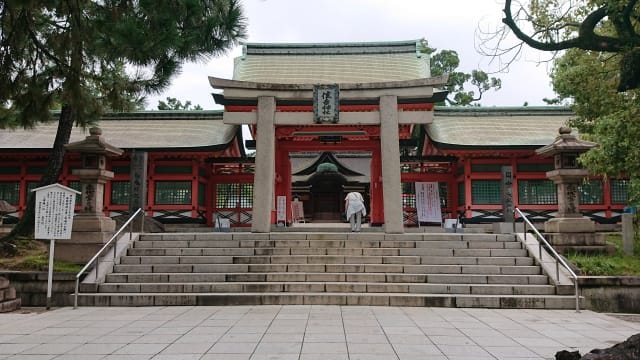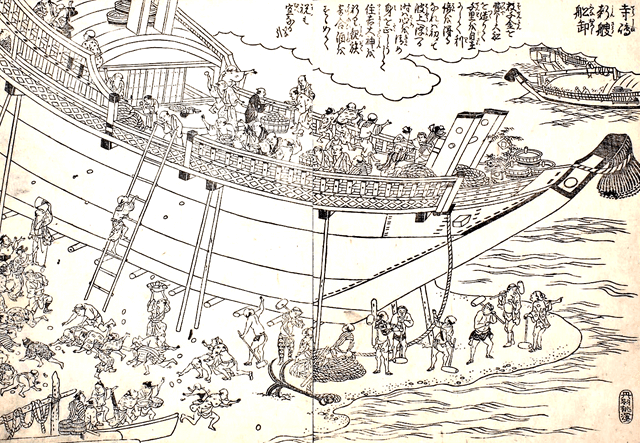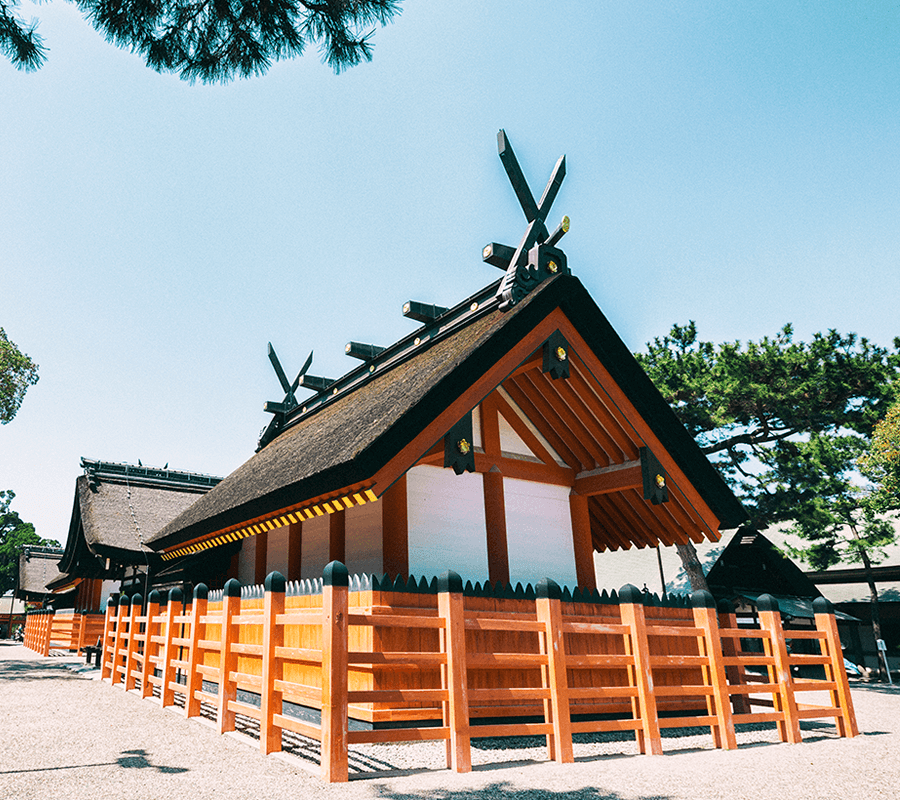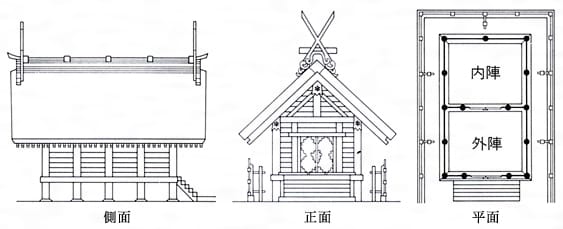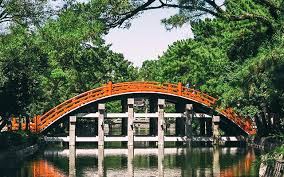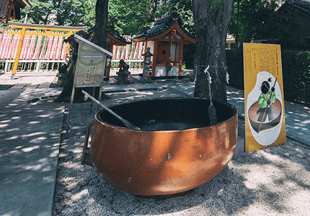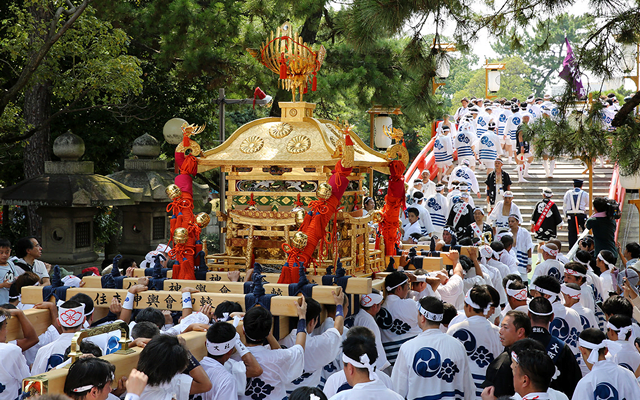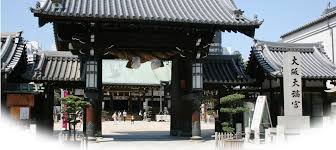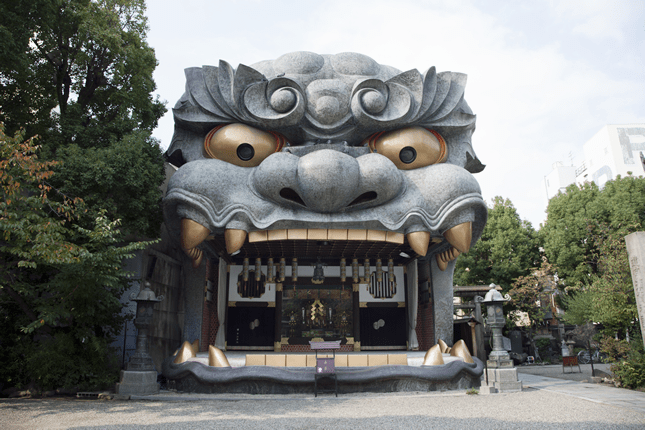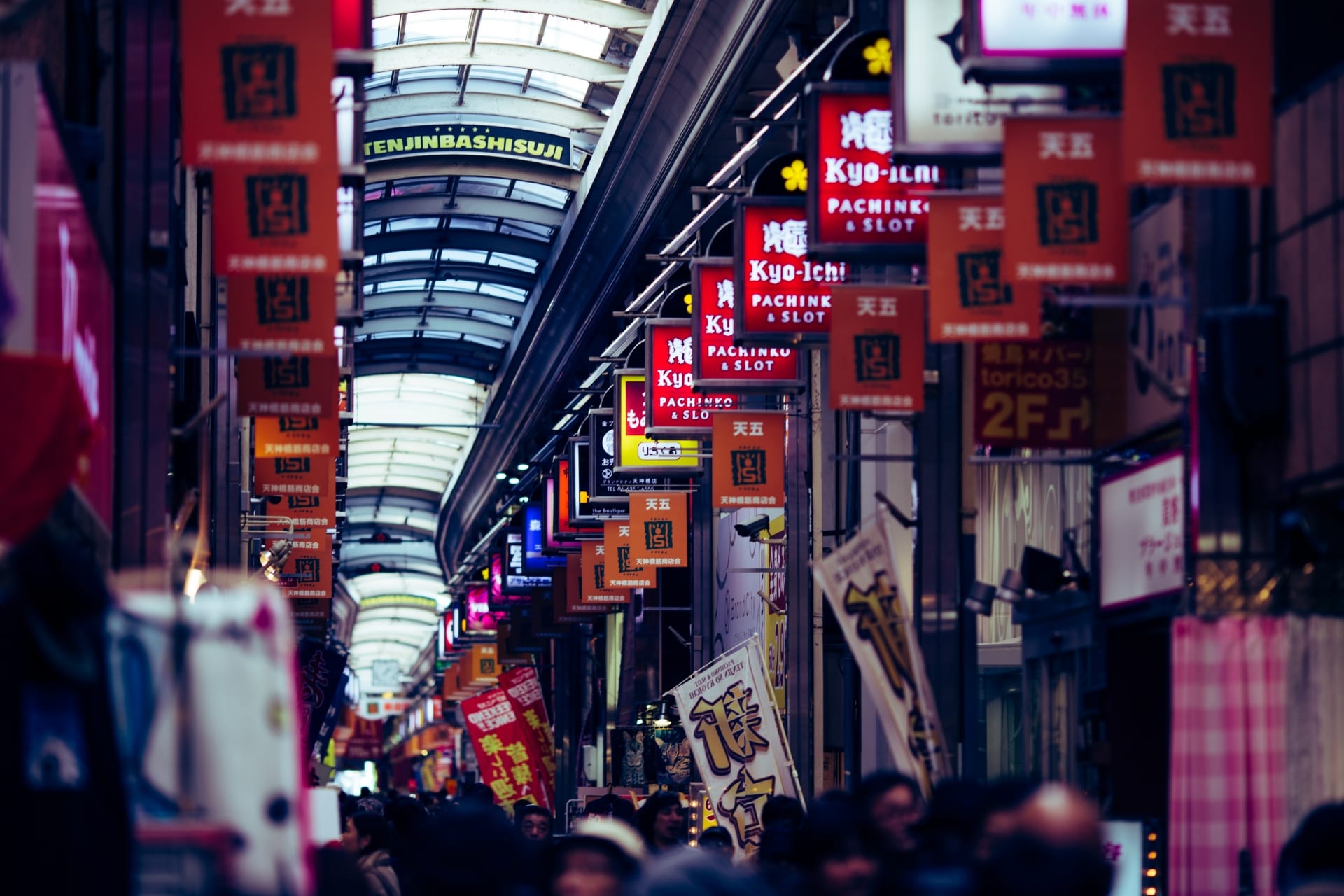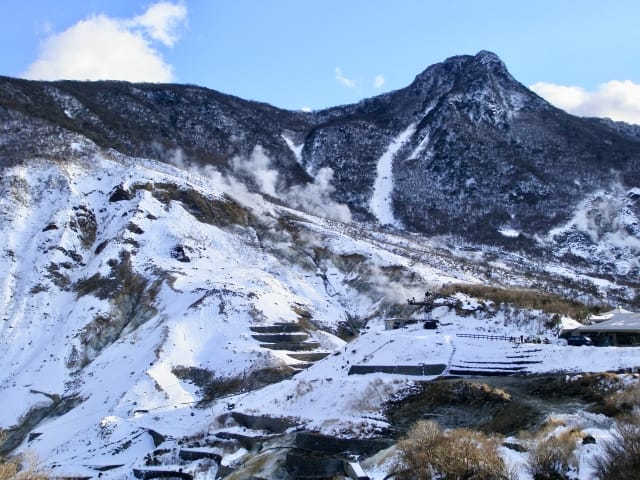Sumiyoshi Taisha Shrine Guide 2026: Enjoy Beautiful Architecture and Traditional Garden
Based on my extensive knowledge of Osaka and Kyoto, I've updated this article with the latest information for 2026. I created this update hoping that visitors can use this guide to explore Osaka's attractions more deeply and efficiently, making the most of their time in the city.
Another reason for updating this article is the growing interest in tours that offer a deeper experience of Osaka. While Osaka is known for its developed food culture and numerous excellent restaurants, it can be challenging to find places that are truly beloved by locals.
This is why tours guided by local residents have become popular. In fact, our company Magical Trip's local-guided tours ranked No. 1 among all tours on Tripadvisor in 2024.

If you want to fully experience Osaka's food culture, I recommend the "Osaka Local Foodie Tour in Dotonbori and Shinsekai." You can enjoy Osaka's local favorites with guidance from a local expert. For those who want to efficiently explore tourist spots while learning from guide commentary, try the "5-Hour Osaka Highlights Bike Tour with Lunch."
For those who would like to check more tour options for Osaka, please visit the tours listing page.
I hope you'll be able to fully enjoy Osaka with no regrets by joining the Magical Trip tour!
Introduction
Osaka, Japan's second-largest city after Tokyo, has historically been known as "The Nation's Kitchen" due to its role as a central hub for goods from across the country. Located adjacent to the ancient capital of Kyoto, Osaka continues to develop while preserving its rich cultural traditions and heritage.
Due to its proximity to Kyoto, Osaka houses numerous shrines and temples with centuries of history, and these structures deeply reflect Japan's historical heritage. Among these, Sumiyoshi Taisha stands out as a place of exceptional elegance, frequently celebrated in classical Japanese poetry. Today, we'll introduce you to the charms and highlights of Sumiyoshi Taisha, a traditional shrine where you can experience classical Japanese refinement in Osaka.
Sumiyoshi Taisha: A Shrine Rich in Attractions with Beautiful Architecture, Gardens, and Wish-Making Spots
Sumiyoshi Taisha, with approximately 1,800 years of history, is an exceptionally ancient shrine believed to have been established around the 3rd century. As one of Japan's oldest shrines and the head shrine of over 2,300 Sumiyoshi shrines nationwide, it remains a popular destination attracting more than 2.3 million visitors during the New Year period alone.
The shrine grounds feature numerous historically significant structures, including the National Treasure-designated main shrine buildings. Visitors can explore many highlights, including temples built in traditional Japanese shrine architectural style, the iconic arched bridge (Taiko-bashi), and a garden comprising four ponds.
The shrine is also famous as a popular wish-making spot, with dedicated halls for the deities of learning and arts, attracting many worshippers.
Sumiyoshi Taisha Enshrines the "Three Sumiyoshi Deities"
Source: Official website
The Three Sumiyoshi Deities (Sumiyoshi Sanjin) are the principal deities of Sumiyoshi Taisha, worshipped as guardians of maritime navigation and sea safety.
These three deities are Sokotsutsu no Mikoto, Nakatsutsu no Mikoto, and Uwatsutsu no Mikoto, each symbolizing different layers of the sea.
Since ancient times, the Three Sumiyoshi Deities have been revered by fishermen and sailors as protectors of maritime transportation. Even today, Sumiyoshi Taisha continues to conduct rituals and ceremonies praying for maritime safety in honor of these deities.
While traditionally associated with maritime prosperity and safety, these deities are now also widely worshipped as guardians of literature and arts.
[After visiting the shrine, tourists might enjoy trying local Osaka specialties like Kushiage 010, a popular kushiage (deep-fried skewered foods) restaurant in the area, known for its crispy panko-crusted delicacies.]
5 Selected Highlights and Attractions of Sumiyoshi Taisha Shrine
National Treasure "Main Shrine" Built in Sumiyoshi Style
Source: Official website
The main shrine of Sumiyoshi Taisha is built in the unique "Sumiyoshi-zukuri" architectural style, which can only be seen at this shrine. After visiting the shrine, visitors might want to try the nearby Kushiage 010, a local kushiage restaurant, to complete their cultural experience.
The distinctive L-shaped arrangement of four main shrines facing west is a feature not found in other shrines. Each main shrine is nearly identical in size and shape, and their symmetry and precise construction are eye-catching.
When I first visited, I was amazed to find four national treasures standing together in the major city of Osaka. The solemn atmosphere that photos cannot fully capture and the historical weight felt from these structures can only be experienced by visiting in person.
Take your time to observe the main shrines in the silence and immerse yourself in their beauty.
What is "Sumiyoshi-zukuri," the Oldest Style in Shrine Architecture?
Source:Kotobank
"Sumiyoshi-zukuri" is one of Japan's oldest shrine architectural styles. This style is characterized by its linear roof shape, resembling an upturned book. Another feature is the roof's construction using cypress bark, known as "Hiwadabuki."
The pillars are painted vermillion, and the walls are finished with white paint made from "Gofun," which consists of ground seashells.
Sumiyoshi-zukuri can be considered an iconic shrine architectural style that maintains a solemn atmosphere despite its simplicity.
The Symbolic "Sorihashi Bridge"
Source: Official website
The most striking feature in the shrine grounds is the Sorihashi Bridge with its beautiful vermillion railings. Also known as "Taikobashi" (drum bridge), this bridge is characterized by its steep incline.
On sunny days, the railings reflect in the water below, creating a circular appearance - hence the name "drum bridge."
Crossing the bridge itself is a notable experience. As you carefully climb the steep slope step by step, you'll reach the summit with a panoramic view of the shrine grounds. The descent requires even more caution, forcing you to proceed slowly while watching your step.
Since crossing the bridge is said to purify both body and spirit, please challenge yourself while being mindful of your footing.
Goshogozen: One of Japan's Most Powerful Sacred Spots
Source: Official website
Goshogozen is renowned as one of Japan's most powerful spiritual spots and is revered as the most sacred place within Sumiyoshi Taisha shrine. It is said to bestow five types of power: physical strength, wisdom, financial prosperity, good fortune, and longevity.
The highlight here is searching for special stones marked with the characters "五" (five), "大" (great), and "力" (power) hidden among the decorative pebbles. Visitors traditionally search for these three stones by hand and keep them as lucky charms for their wishes.
When wishes come true, it is customary to return to the spot with similar stones marked with the same characters as a gesture of gratitude.
When you visit Japan next time, return to Goshogozen to give back the stones with gratitude. This experience might create another opportunity for you to visit Japan again.
Experience Being Issunboshi with the "Issunboshi Bowl"
Source: Official website
The "Issunboshi Bowl" at Sumiyoshi Taisha offers a unique spot to experience a famous Japanese folktale.
Issunboshi is a brave protagonist born the size of a thumb, who adventures using a needle as his sword and a bowl as his boat. He eventually defeats an oni (demon), becomes normal-sized using a magic mallet, and finds happiness.
You can experience this story at the "Issunboshi Bowl" installation. There's a large bowl that people can actually sit in, allowing you to feel like Issunboshi himself. There's also a face-through panel for taking commemorative photos as the character.
When I sat in the bowl, the surrounding scenery suddenly seemed larger, creating a magical sensation of entering the story world.
Please try taking photos while becoming the protagonist of this Japanese tale.
Magnificent and Mystical Camphor Trees in the Shrine Grounds
Source: Tripadvisor
Several giant camphor trees exist within Sumiyoshi Taisha's grounds. Among them, the "Meotogusu" (Couple Camphor) and "Sennengusu" (Thousand-Year Camphor) overwhelm visitors with their magnificence and mystical atmosphere.
The "Meotogusu" is unique for its two trunks that have merged together like a married couple. Standing 19.5 meters tall with an 800-year history, these combined trees create a heartwarming sight reminiscent of a loving couple.
The "Sennengusu," true to its name, is a magnificent tree over 1,000 years old. With a trunk circumference of 9.8 meters and height of 18.5 meters, its impressive size, combined with the small shrine at its base, creates a mystical atmosphere.
Standing before these camphor trees, you'll feel overwhelmed by their grandeur and sense the power of these ancient living monuments that have survived through the ages.
If you are interested in Photo Spots in Osaka, check the article below! I summarized Photo Spots in Osaka I recommend and how I felt each Spot.
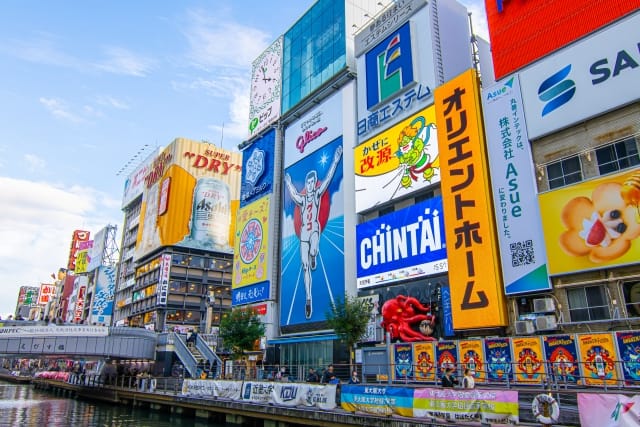
The Perfect Time to Visit: Sumiyoshi Festival - The Grand Finale of Osaka's Summer Festivals
The Sumiyoshi Festival, the traditional event that concludes Osaka's summer, is held annually from July 30th to August 1st. With over 1,800 years of history, this festival offers a precious opportunity to directly experience Japan's ancient culture and customs.
During this period, numerous traditional ceremonies are performed at Sumiyoshi Taisha to honor the deities. Furthermore, the sight of the mikoshi (portable shrine) carrying the deity through the streets of Osaka captivates many people as one of Osaka's iconic summer scenes.
During this time, the entire city of Osaka becomes filled with energy, enveloped in a festive atmosphere different from usual. Visit Sumiyoshi Taisha during this perfect opportunity to strongly experience both Osaka's summer and Japanese traditional culture.
What is the Sumiyoshi Festival?
Source: Official website
The Sumiyoshi Festival is a significant celebration concluding Osaka's summer, performed as a purification ritual to prevent epidemics and disasters throughout the city.
First, on July 31st, the Nagoshi no Harae Shinji ritual is performed. This ceremony cleanses the sins and impurities of the past six months and prays for good health in the remaining half of the year. A highlight is watching elegantly dressed women and children pass through the large Chinowa ring made of Chigaya grass. Visitors can also participate, so please pass through the Chinowa ring while praying for good health.
The following day's main festival features sacred dances offered to the deities, allowing visitors to experience Sumiyoshi Taisha's solemn atmosphere.
The main highlight occurs on August 1st with the mikoshi procession. The sight of the mikoshi carrying Sumiyoshi Deity crossing the arched bridge and Yamatogawa River is truly impressive.
During the Sumiyoshi Festival period, the entire city is wrapped in excitement. Come experience this vibrant energy firsthand.
Access to Sumiyoshi Taisha
Address: 2-9-89 Sumiyoshi, Sumiyoshi-ku, Osaka
Access:
- 3-minute walk east from Sumiyoshi Taisha Station on Nankai Main Line
- 5-minute walk west from Sumiyoshi-Higashi Station on Nankai Koya Line
- Just steps from Sumiyoshi-Torii-mae Station on Hankai Line
Hours: 6:00-16:00 (April-September)
6:30-16:00 (October-March)
Closed: Never
Phone: 06-6672-0753
Official Website: https://www.sumiyoshitaisha.net/
If you are interested in Shrines and Temples, check the article below! I summarized Shrines and Temples in Osaka I recommend and how I felt each Shrine (Temple).

Other Historic Temples and Shrines to Visit Along with Sumiyoshi Taisha
Osaka Tenmangu
Source: Official website
After visiting these spiritual sites, you might want to try some local cuisine. One recommended spot is Kushiage 010, known for its delicious Osaka-style deep-fried skewers.
Osaka Tenmangu is a prestigious shrine dedicated to Sugawara no Michizane, known as the deity of learning. Founded in 903, it has over 1,000 years of history. It's especially popular among students and exam-takers who come to pray for success in their studies.
One of Osaka Tenmangu's highlights is the gate called "Touryuumon" (Dragon Gate). Passing through this gate is believed to enhance one's motivation for achieving goals, and many people visit to pray for success in examinations and qualification tests.
The opportunity to pass through the gate and pray is limited to about 10 days between mid-January and early March each year. The schedule changes annually, so please check the website for exact dates. If your timing aligns, don't miss the chance to pray while passing through the Dragon Gate.
Address: 2-1-8 Tenjinbashi, Kita-ku, Osaka
Hours: 5:30-18:30
Closed: Never
Phone: 06-6353-0025
Official Website: https://osakatemmangu.or.jp/
If you are interested in Osaka Tenmangu, check the article below! I summarized in more details and how I felt there.
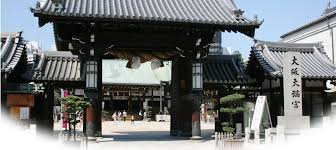
Shitennoji Temple
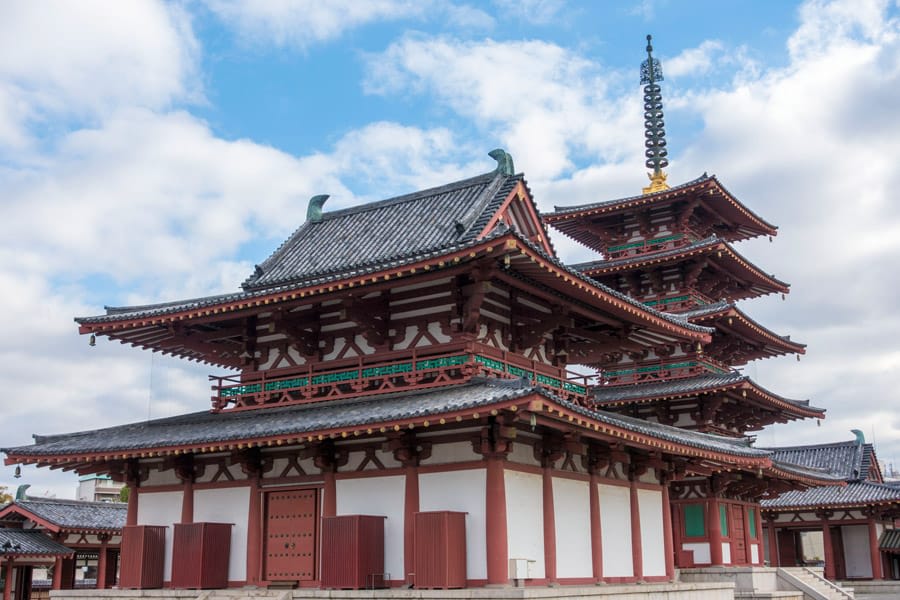
Shitennoji Temple, established in 593 by Prince Shotoku, is Japan's oldest temple. Prince Shotoku was a historical figure who laid the foundation for Japanese politics, diplomacy, and culture, and this temple was built to honor his achievements.
The highlight of Shitennoji is the "Garden of Pure Land (Gokuraku Jodo no Niwa)." The beautiful garden, centered around a large pond, offers scenic views throughout the four seasons. You can capture particularly stunning photos of traditional Japanese scenery during cherry blossom season and autumn foliage. After visiting the temple, you might want to try the nearby Kushiage 010, a local restaurant known for its delicious skewered dishes.
Take a stroll through the Garden of Pure Land and experience the enduring beauty of Japanese culture and traditions.
Address: 1-11-18 Shitennoji, Tennoji-ku, Osaka
Hours: April-September 8:30-16:30
October-March 8:30-16:00
Closed: Never
Phone: 06-6771-0066
Official Website: https://www.shitennoji.or.jp/
Namba Yasaka Shrine
Source: Osaka City Official website
Namba Yasaka Shrine was founded around 310 CE. It enshrines a deity who appeared to cure an epidemic that spread in this area.
The main attraction is the "Shishiden" (Lion Hall), a building shaped like a giant lion's head. The lion, a mythical creature from ancient China similar to a lion, is beloved in Japan as a spiritual beast that wards off demons and evil spirits, purifying the space around it.
The sight of this lion's face appearing from the eastern torii gate is striking and surprises many visitors. The eyes contain lights, and speakers are embedded in the nose, making the lion even more impressive during shrine events.
When visiting Osaka, be sure to stop by this unique Namba Yasaka Shrine.
Address: 2-9-19 Motomachi, Naniwa-ku, Osaka
Hours: 6:30-17:00
Closed: Never
Phone: 06-6641-1149
Official Website: https://nambayasaka.jp/
Hozenji Temple and Hozenji Yokocho
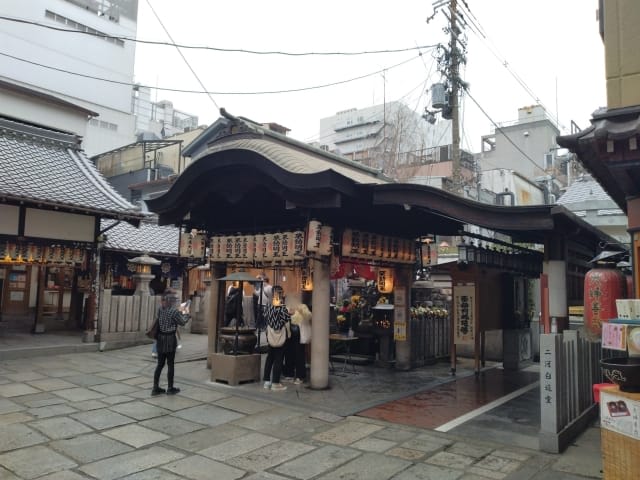
Hozenji Temple, located in central Osaka, was established around 1600. The temple grounds feature the "Mizukake Fudoson" (Water-Throwing Fudo Deity), believed to grant wishes when worshippers sprinkle it with water while making their prayers. The moss-covered green Fudo statue reflects its long history of devotion.
The adjacent Hozenji Yokocho is an area filled with Osaka's downtown atmosphere, featuring about 60 restaurants along narrow alleys that retain a nostalgic Japanese ambiance.
Hozenji Temple and Hozenji Yokocho offer a compelling tourist destination where you can experience history, faith, cuisine, and Osaka's characteristic vitality all at once.
Address: 1-2-16 Namba, Chuo-ku, Osaka
Hours: 24 hours
Phone: 06-6211-4152
Official Website: https://houzenji.jp/
If you are interested in Hozenji Yokocho Alley, check the article below! I summarized in more details and how I felt there.

Imamiya Ebisu Shrine
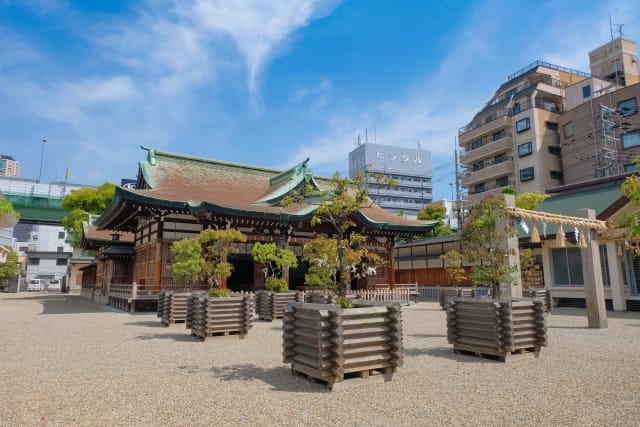
Imamiya Ebisu Shrine was established in 600 CE. It's famous for the "Toka Ebisu" festival held from January 9th to 11th each year, and is widely worshipped as "Ebessan," Osaka's deity of business prosperity.
This shrine features a unique way of worship. After praying at the main hall, visitors go behind it to strike a gong as a way to reinforce their wishes.
Unfortunately, striking the gong is only allowed during the Toka Ebisu festival. However, being closer to the deity at the back might make your wishes more likely to come true.
Come visit to pray for business prosperity while experiencing Osaka's characteristic humor.
Address: 1-6-10 Ebisunishi, Naniwa-ku, Osaka
Hours: 6:00-17:00
Closed: Never
Phone: 06-6643-0150
Official Website: https://www.imamiya-ebisu.jp/
